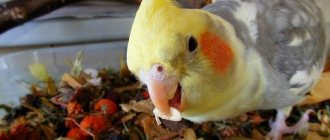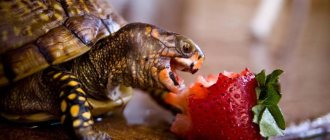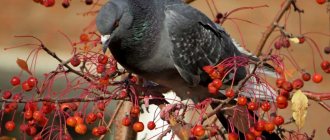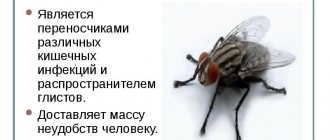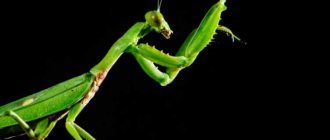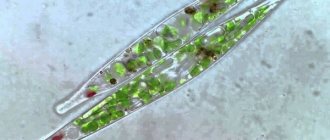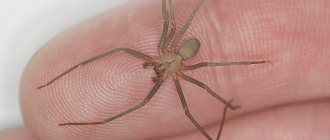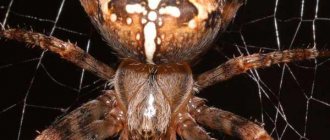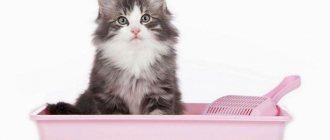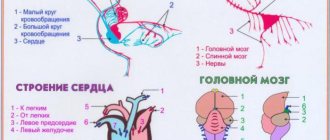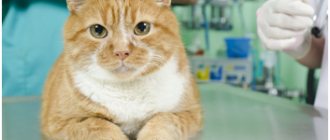What do flies like?
At home, several species of flies live near humans.
The most common house fly is the house fly. The synanthropic species is not adapted to life in the wild; it feeds on almost everything that humans eat, as well as garbage, waste, and excrement. The insect prefers liquid food because it is absorbed faster; pests love sweet dishes. They are attracted to products that show signs of rotting. There are also dishes that flies prefer, and those that are eaten if there is nothing better.
Favorite dishes:
- fruit, vegetable juice;
- jam;
- syrup;
- sugar;
- compote;
- lemonade;
- honey.
Without much enthusiasm, but if necessary, he eats a fly:
- sausage;
- porridge;
- borsch;
- soup;
- fermented milk products;
- mashed potatoes;
- candies;
- cakes;
- fruits;
- vegetables.
On a note!
Flies in the house feed on everything they can get their hands on. Initially, they absorb liquid foods, since less energy is spent on digesting such food, then they move on to solid foods. To be completely satiated, an adult needs only to drink a drop of juice and eat a bread crumb.
Feeding flies
Nutritional Features
The official classification of flies used by scientists is based on the feeding habits of adult insects. Based on what flies eat at home and in the wild, they are divided into:
- necrophages,
- coprophages,
- nectarivores,
- hematophages,
- polyphages.
Attention! Houseflies are polyphagous - they are omnivorous in nature. Preference is given to organic food with a distinct smell. They do not disdain rotting, decaying products.
Flies eat both liquid and solid food, but they prefer the first option. Before eating a solid product, the insect will have to spend some time producing saliva (to wet the food).
Diptera insects have no teeth; they absorb food with their proboscis. This organ is a kind of “structure” consisting of 2 tubes. The fly uses them to suck up food.
Before feasting on a particular product, the insect tastes it. For this purpose, there are special taste buds at the tips of the paws.
On the antennae of flies there is a group of neurons responsible for the sense of smell. Therefore, insects do not find food by chance, but purposefully follow a smell that is pleasant to them.
The structure of the fly's mouthparts
Non-bloodsucking house flies are more common in apartments. They have a specific structure of mouthparts designed to feed on liquids or substrates that dissolve in the creature's saliva.
The main feature of the muscoid oral apparatus is the change and hypertrophy of the lower lip of the organ. At the same time, the insect's jaws and upper lip are atrophied. Externally, the oral apparatus looks like a proboscis, attached to the sclerites of the head and jaws. They ensure the flexion of the oral organ and its position above the head.
The main part of the proboscis is the rostrum. Along its edges there are paired plates and palps, supplemented by a clypeus. Direct capture of food is carried out by the lower lip, which looks like an open gutter with a subpharyngeal gland. Through it, the fly sucks in food and secretes saliva.
House flies consume nutrient liquids and food suspensions - products of decomposition of organic matter. Semi-solid food reaches the insect after being processed by saliva. The household pest releases it onto the surface of the food, waits for it to dissolve, and then absorbs the result in liquid form.
Feeding process in flies
What do flies eat? These dipterans are considered practically omnivorous. And the lack of teeth is not a hindrance. The feeding process involves a long proboscis - a kind of tongue divided into two tubes. It is through them that the food that the fly eats is absorbed.
Feeding process in flies
This is interesting, but without exaggeration these insects can be called gourmets - they do not eat everything. On the paws of an adult individual there are taste buds that allow you to taste food before the proboscis gets involved.
What do flies eat in the house? It is most convenient for insects to eat liquid food, since solid food is more difficult to eat. The indoor snack lover spends too much energy on eating and digesting it: first, solid food is abundantly moistened with saliva, and only then penetrates the digestive tract.
Typically, these dipterans are not capable of sucking human blood, but the mouthparts of the housefly, which is very similar to a housefly, are designed in a special way. The proboscis, strongly elongated and equipped with chitinous “teeth” at the end, scrapes off the epidermis by friction and lets saliva into the puncture. The zhigalka not only feeds on blood, but also leaves irritation at the site of the bite.
External structure
At first glance, the structure of a fly seems simple. But if you delve into how many features this living organism has, it becomes obvious that not everything is so simple.
The skeleton of a fly consists of three main parts, like those of most insects:
- head;
- breast;
- abdomen.
The head of the pest has a mouthparts, antennae, and a vision organ. The chest is equipped with three segments with a pair of transparent wings, and there are also 3 pairs of limbs on it. The chest part is filled with a powerful muscular system.
Fly head
Entomologists know how many eyes an ordinary fly has, as well as other features of the organs of vision and touch that the fly’s head is endowed with:
- Eyes. The organ of vision of a buzzing parasite consists of a large number of simple ocelli. Visually, this represents a faceted grid. The pest sees objects comprehensively, but their image turns out to be mosaic. Each facet sees a small fragment, and they are all combined into a single picture by the brain. Each organ of vision, located on the sides of the head, includes up to 4000 facets. And on the crown there are also 3 simple eyes. It turns out that the fly has only 5 eyes.
- Mustache. This is a kind of olfactory organ of the pest. They are antennas or movable jointed appendages of the head that serve as landmarks. The antennae help in capturing odors at long distances and also determine the direction of movement. The antennae of females and males are visually different.
- Oral apparatus. It is a sucking proboscis of a fly, of the licking type. The extended lobes of the upper and lower lips come into contact with food. The pest's jaws are powerful. The mouthparts of the parasite, which feeds on blood, are additionally equipped with hard, sharp scales. They perform the function of teeth, helping to pierce the skin of humans or animals. To draw in fluid, the parasite has a pharyngeal pump.
There are more of them in the male sex, and the female has a better developed olfactory system, with the help of which she finds favorable conditions for laying eggs and for the further development of offspring.
Breast
The thorax or thorax is distinguished in all segmented invertebrates. In buzzing parasites it is divided into 3 segments. Bone structures and muscle fibers allow flight, so the middle part of the chest is especially developed.
When considering this section, it becomes clear how many legs such creatures have. Entomologists distinguish 3 pairs of limbs. Each is divided into 5 segments and equipped with its own muscle system.
Each paw ends with claws and suction cups, allowing the parasite to confidently hold on to any surface, even the most uncomfortable.
When moving, the soft pads compress and a sticky secretion is released. This feature helps them hold and move freely on window glass or a smooth surface.
With the help of its paws, the parasite not only actively moves, but also uses it to determine the taste and quality of food. After a few seconds of analysis, he starts eating or looks for a new treat.
Wings of a fly
Entomologists know how many wings such a parasite has. They explain that only the upper wings of the fly are preserved and they are well developed. This exoskeleton appendage is transparent and membranous. The posterior pair is deformed and forms halteres.
They provide support during flight, allow you to hover without moving for a while, and also produce a peculiar buzzing sound. To strengthen the thin wings, cylindrical veins are provided.
During the flight, the parasite turns off one of the wings one by one. It is capable of abruptly changing the trajectory of movement, performing complex maneuvers, and also abruptly taking off without additional acceleration.
Abdomen
Also of interest is the abdomen and how many segments it contains. This part of the body is elongated, cylindrical in shape. Consists of 10 parts and also includes reproductive, respiratory and digestive organs.
The abdomen is covered with elastic chitin, which increases with food intake and before eggs are laid. How much a parasite weighs constantly changes depending on its condition.
Classification of flies: types and nutritional groups
The number of species of dipterous insects, which include flies, numbers several thousand. Some of them are synanthropic, i.e. they tend to live closer to people and consume waste, while others live in the wild (forests and fields) and are constantly searching for food.
According to the organization of the feeding process, flies are divided into 3 groups:
- hematophagous (bazaar, zhigalka, tsetse, etc.) - blood-sucking, such flies in nature feed on blood, ichor and sweat, the diet of the larvae consists of excrement;
- nectarophages (wohlfart fly) - for adult individuals, plant juices serve as food, less often - animal droppings, the larvae develop and feed on organic tissues, since the female lays eggs on wounds and mucous membranes of animals and humans;
- coprophages (pasture, house) - they feed on food waste or excrement, in nature they can also consume plant juices;
- necrophages (meat), in which adult individuals feed on corpses, as well as food and meat waste, excrement;
- polyphages (indoor, etc.) - are omnivores, consuming food products and waste of plant and animal origin, as well as waste products of living organisms, discharge from wounds and mucous membranes as food.
Interesting!
Among the types of flies there are also predatory ones (ktyri), which feed on mosquitoes, cats and even bees. And there are those who eat cheese heads all their lives, their larvae - cheese flies - multiply and grow in them.
What they look like
The eggs of the fly are white, very small, oblong. When magnified, they look like grains of rice. Inside there is a nutritious yolk, due to which the fruit develops.
Immediately after leaving the eggs laid by the fly (at the initial stage of development), the body length of the maggot is approximately 2 mm. After 1 molt – 4-5 mm, after 2 – 8-9 mm, before pupation – 10-13 mm. Weighs about 22-27 g.
Adult fly larvae are small worms of a yellowish , gray or cream color, shiny, with a barely pronounced brown head, on which there is a mouth opening with retractable hooks. The back of the body is slightly rounded.
Upon closer inspection, you can see a depression and two dark dots in it - the respiratory plates. The body consists of 13 segments, 3 of which belong to the thoracic region, the rest to the abdominal region.
Maggots do not have normal (jointed) legs. Movement (locomotion) is ensured by false legs (outgrowths with cavities), crawling ridges (thickenings on the sides of the body), and contractions of the entire body.
The prepupa is the same color as the larva . As the puparia hardens, it darkens, eventually turning brown. The pupa looks like a small barrel with transverse circular notches.
Feeding the burners
Autumn burner flies are found on all continents, but more often they settle in places where animals (cows, sheep, etc.) are kept. They appear at the end of summer and early autumn, and with the onset of cold weather they can move closer to human habitation.
The main diet for live baits is blood. To get to it, they have chitinous teeth, with which they scrape off a small piece of skin from the victim to get to the blood vessels.
Important!
They prefer the blood of cattle, and are capable of biting a person only if they accidentally enter his home. This species is dangerous for people because it is capable of carrying infections that are transmitted through the blood (ulcers, trypanosomiasis, tularemia, etc.), after introducing bacteria into the wound, they contribute to the development of sepsis (blood poisoning).
Commercial use
The hovering fly is used for commercial purposes, because why use chemicals when there is a natural enemy of many pests, which is capable of producing enough offspring in a short time to destroy all the aphids on the site without using even 1 gram of poison.
Do Hover flies sting or bite?
Hover flies can't sting or bite, but when they lick you, you can feel it and you might think you're about to be bitten, but they're just after your sweat.
